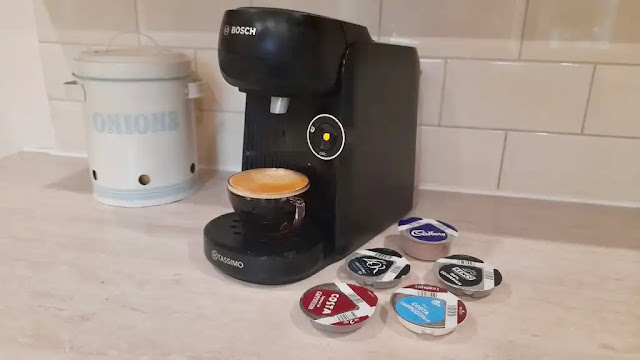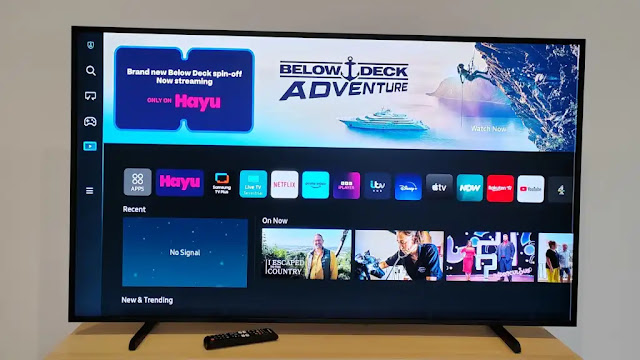The choice of smart doorbells isn't huge, but Nest's Hello has arrived in the UK and it's impressive. Here's our review.
Our Verdict
The Hello does its job well, notifying you when someone is at the door and allowing you to talk to them or play a preset phrase.
It isn’t perfect: it’s expensive and – for UK homeowners – not easy or convenient to install. And after the big initial outlay, you’ll have to pay for Nest Aware if you want more than a basic feature set.
But if money is no object, this is an excellent smart doorbell.
Price When Reviewed
- US $229
Smart doorbells are set to surge in popularity. Nest is by no means the first on the scene but its Hello means it can now compete with the likes of Ring, which has now been bought up by Amazon.
With Nest Hello, you'll get an alert on your phone (or smartwatch) when someone rings the bell and you'll see a live video stream. Thanks to a built-in speaker, you can tell the delivery guy to leave the parcel in the back garden when you're not in, or let a friend know when you'll be back.
You can even choose a default response so the Hello will reel off a phrase as soon as someone presses the button.
Price & Availability
The Hello costs £229 / US$229 for DIY installation. If you already have a wired doorbell that happens to run on 16-24V then it should be pretty easy. (We’re told that Nest is currently in the process of certifying Hello to run on 12V AC.)
However, while that's a common setup in the US and for UK newbuilds, most UK homes won't have a suitable power supply for Hello. And, in case you’re wondering, you can’t use your battery-powered chime since Hello needs AC power, not DC.
This is one reason why Nest recommends professional installation which, if ordered through Nest, will add a further £100 to the total. This includes the transformer and any other wiring needed to make Hello work.
There's further expense, too, since you'll need a Nest Aware subscription to use Hello's best features, including continuous video recording. This costs from £4/US$5 per month. Currently, though, you get a free Google Home Mini, until 12 September 2018.
Ring’s Video Doorbell 2, by contrast, is considerably cheaper. Even the newer second-gen version is £179/US$199, and the monthly subscription for the cloud services is £2.50/US$3 per month.
For more alternatives, see our roundup of the best smart doorbells.
Design & features
Like other Nest products, the Hello is a beautifully designed and made device. Even the unboxing experience is pleasant, although you will wonder why it's so expensive given that you get only the unit itself plus a small wiring harness which attaches to your chime in the box.
This is one big issue with Hello: it's limited to homes with a wired doorbell and a chime already installed. Nest won't install the gadget if you don't have these things; an existing wireless doorbell won't do. Unlike the Video Doorbell 2, which is wireless and battery powered, Nest has to be installed by a qualified electrician.
And as talented as he or she may be, you're inevitably going to end up with some unsightly boxes screwed to the wall.
Fortunately, the doorbell is the opposite: a smallish, attractive lozenge with a glossy black front and white, matt sides. There's a blue light ring around the doorbell button. A camera with a wide-angle lens sits at the top, and there's a speaker on the bottom edge.
It clips into the mounting plate, and a wedge is supplied in the box that tilts the Hello around 15 degrees. This is useful if your doorbell is in a corner or - as with our home - is mounted on a wall perpendicular to the front door.
Hidden in the middle are infrared LEDs for night vision. The camera records at up to 1600x1200, or "2K" - basically the same as Full HD even though it's a different aspect ratio. More importantly, it's HDR video so you get better detail.
When you add the Hello to the Nest app, you have to scan the QR code printed on its rear, then you're given detailed instructions on how to install the chime connector thingy, but this will be done by your friendly sparky.
How Does Nest Hello Work?
When someone presses the button, they'll hear a 'ding dong' from the gadget's own speaker, so they know it's working. The blue ring will pulsate, too. Also, if you choose to allow it, a tiny green LED will light up at the top to show the camera is recording.
In the house, the chime will sound just as it did with your old dumb doorbell button, but you'll also get a notification on your phone. Plus, if you have a Google Home, Home Mini or a Nest Cam IQ, the Google Assistant can announce that someone is at the door.
If you’re not home, the instant alert you get on your phone means you can quickly open the app, see who’s there and either use one of the pre-recorded responses or use the Talk button to speak to them.
Perhaps a bulky delivery has arrived at an unexpected time: you could tell the courier to leave the parcel in a safe place, or that you’re almost home and could they please wait a minute.
Usefully, a timer displays how many seconds have elapsed since the bell was pressed. We found that the typical delay between someone ringing the bell and being able to see the live video was around 10 seconds.
Nest Aware
Without Nest Aware, this is pretty much all the Hello can do. If you happen to miss a notification, the app will show you a couple of recent events, which comprises a thumbnail image, the time it was captured and whether it was triggered by motion, the detection of a person or because there was an unusual sound.
You can disable alerts for sounds if you only want to be notified when a person has been spotted.
But if you’re happy to pay a monthly subscription fee, Hello can do more.
For one thing, it will record video continuously. This is useful if you want to use the Hello as a security camera, but it also provides a record of activity and lets you see what happened at any moment as far back as your subscription allows.
Without it, the app will still notify you if a person is spotted at your door, but with Aware, you get face recognition. Training it by telling it which are ‘Familiar faces’ means you can cut down on notifications as you can choose to be notified only if a strange face is spotted.
Another way to limit notifications is to choose to receive them only when no-one is home, which requires everyone to have the Nest app on their phone and use Home/Away assist.
Plus, there’s also Quiet Time, a feature which doesn’t require Nest Aware. Tapping the option on the main screen lets you mute your indoor chime and announcements from your Google Home(s) for 30, 60 or 90 minutes.
Having Nest Aware also means you can set up activity zones. By default, the entire frame will be monitored for movement and people. But if you don’t want that, you can draw a shape around the area to monitor. You can create multiple zones, and decide which alerts to receive for each.
The last main feature of Nest Aware is the ability to save clips. They’re saved to your Nest account, and you can send a link so anyone can watch them. Or, you can download them to your phone’s camera roll.
Performance
We’ve tested Hello for the past six weeks and it has been entirely reliable, notifying us every time someone rang the bell. If there’s a criticism, it’s that the app can be slow to display video on demand and on occasion refused to connect to the Nest service at all.
However, these are issues the app in general and all Nest cameras, not just the Hello.
The good news is that the app itself is nicely designed and easy to use. And, in general, it’s nice and responsive. For example, as you scroll down the timeline, the video thumbnail updates so fast you end up with a time-lapse like view of clouds speeding overhead.
In fact, via the home.nest.com web portal you can select a time range and create a time-lapse clip such as this one:
Video quality, importantly, is absolutely excellent. Unlike other devices – mainly dash cams – which claim to record HDR video, the Hello really does and the improvement is obvious.
There’s plenty of detail in dark and bright areas and, crucially, anyone that rings the bell or stands near the camera is easily recognisable.
Naturally, detail levels drop at night, but even so, image quality is still a good step above many security cameras.
Audio quality is also top notch: you can easily hear the other person’s voice and they can hear you speaking back to them.
Specs
- Video doorbell
- Resolution: 1600x1200, 30fps, HDR
- Field of view: 160° diagonal
- Operating temperature:-10°C to 40°C
- Weather proofing rating: IPX4
- Requires a 16–24V AC, 8VA transformer, chime and a wired doorbell
- Requires minimum 2Mb/s broadband connection
- Wi-Fi 802.11b/g/n, 2.4 GHz (WEP, WPA, WPA2 encryption supported)
- Bluetooth Low Energy (BLE)
- 802.15.4 at 2.4 GHz
- 4.3 x 11.7 x 2.6 cm
- 129g




















0 comments:
Post a Comment